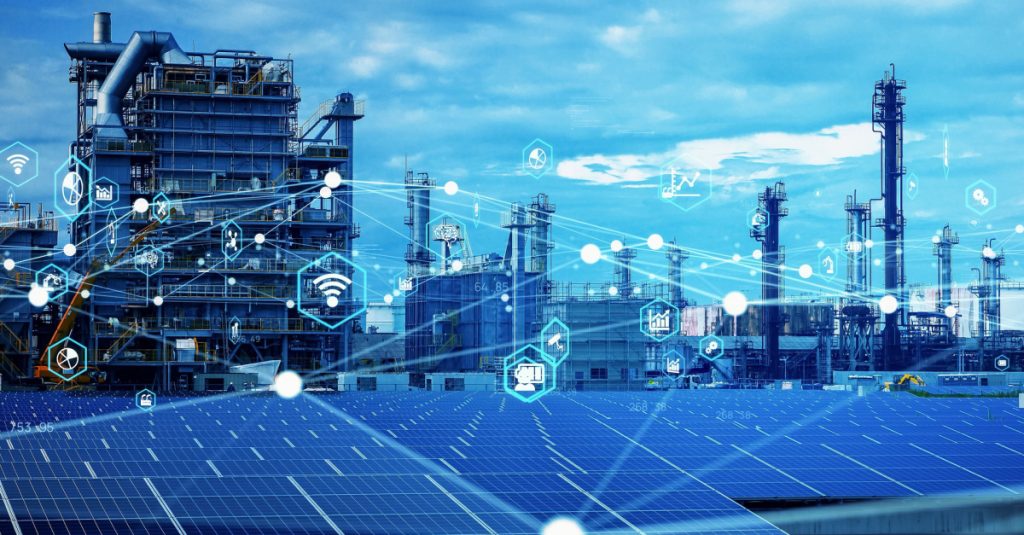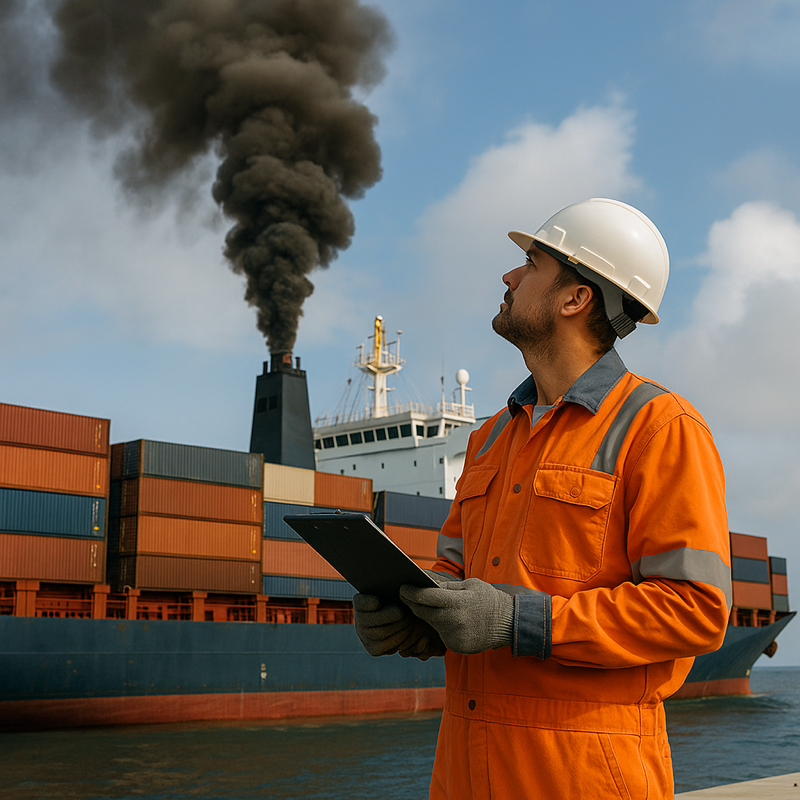While freight transportation as a whole accounts for a sizeable 8 percent of global greenhouse gas emissions, the United Nations has pegged ocean shipping’s contribution at a staggering 3 percent. GHG emissions from ocean carriers are on an upward trajectory, as that percentage has increased in the last 10 years by more than 20 percent.
The OECD reports that 9 in 10 traded goods are carried by ocean vessels. It’s clear that shipping by ocean won’t stop anytime soon, so regulators are trying to incentivize carriers to push for a greener shipping future.
The European Union is working to reverse this trend with the emissions trading system (ETS), which starts in January, but with the United Nations finding “many ships are too old to retrofit or too young to scrap,” reducing vessel emissions, even once a cap-and-trade tax is in place, will be a tall order.
Powering ocean cargo vessels with alternative fuels has emerged as a promising tactic to drive down GHG emissions in the supply chain. In September 2023, Maersk took delivery of a ship with two engines, one of which runs on green methanol. Other carriers have also ordered ships that use the same technology, beginning the scramble to outfit their fleets with cleaner-burning vessels and bring alternative fuels to ocean shipping.
Alternative Fuels: What Strategies Stand Out?
When the idea of supply chain sustainability began gathering steam, ocean carriers pursued liquified natural gas-fueled vessels to reduce their carbon footprints. The problem? LNG releases ¼ of the carbon dioxide as regular fuels, but it also puts out the GHG methane, which, in the long run, is much more harmful to the environment.
The International Energy Agency singled out ammonia in its 2023 Net Zero Roadmap as the fuel that must take the shipping industry by storm if it ever wants a chance at reaching its net zero emissions goal by 2050. Carriers had put 150 ammonia-fueled vessels on order by the end of last year. If ammonia doesn’t emerge as the alternative fuel of choice, hydrogen and biofuels will also play important roles. The organization believes methanol will account for only 3 percent of the shipping industry’s fuel by 2050. This transition to alternative fuels, whatever they turn out to be, will push global energy spending through the roof.
Each alternative shipping fuel has its benefits and drawbacks, meaning there is no clear route for vessel owners to take. Methanol reduces carbon emissions by dramatic amounts, according to EOS Intelligence, but is extremely costly. This means that only the major operators will likely be ready to commit to methanol. On the ammonia front, EOS reports that fuel is still in its infancy, so nobody really knows how well it will operate. No matter the fuel, “cost and availability are determining factors for fuel’s long-term usage in the sector,” EOS found.
In the near term, vessel operators could also look to install exhaust gas cleaning systems on their cargo ships. Known colloquially as scrubbers, these systems wash away some pollution from the emissions cloud by sending the exhaust gas first through a chamber of scrubber water. Once the water removes some of the offending material, emissions are exhausted and the water is discharged to the sea only to be scrubbed itself by the seawater. The result is a cleaner emissions cloud and a clean stream of water back into the ocean.
S&P Global is tracking a significant uptake in scrubbers among vessel operators. Owners acknowledge that the use of scrubbers is a temporary solution that won’t completely reduce GHG shipping emissions; the rise in scrubber adoption might also be a symptom of the industry having no clear picture of “what the best option is among fuel choices while attempting to reduce carbon footprint going forward,” S&P Global reported.
While it’s clear that alternative fuels are needed, ocean carriers are still researching what fuel will best suit their needs today and tomorrow. “While low-carbon fuels have the potential to significantly reduce emissions in the shipping industry, a deeper understanding of their technological and economic suitability is needed,” according to the European Commission Directorate-General for Environment.
Supply Chain Decarbonization Begins with Effective Carbon Monitoring
Whether their ocean carriers are already using alternative fuels, relying on scrubbers, or still developing an emissions-reduction plan, shippers and sustainability officers need an accurate understanding of the GHG emissions related to their shipments. Carriers routing through Europe will be passing added costs associated with the EU ETS on to their customers; without accurate, clean baseline supply chain sustainability data, shippers could end up paying more than their fair share of the emissions cost. Even companies that don’t have shipments routing to Europe should be concerned. The EU ETS regulations may only cover Europe for now, but supply chain sustainability regulations will begin popping up elsewhere soon.
Keeping track of this data can also lead to emissions reduction. Accurately measuring and monitoring emissions helps Greeabl create emissions reduction strategies for its clients. Through its platform, Greenabl supplies clients with actionable, real-time emissions data, giving them a clear picture of their emissions while presenting opportunities to meet their supply chain sustainability goals.
3 Strategies to Monitor and Mitigate Supply Chain Emissions
The push for net-zero supply chain emissions by 2050 is not going away. This is not a passing fad. Shippers and other cargo owners need to find solutions to track and account for GHG emissions in the supply chain. This should be done as quickly as possible to ensure regulatory compliance and create a competitive advantage. Greenwashing is a transparent trick to get business based on a false sustainability narrative, but shippers truly committed to supply chain sustainability will benefit in the long run.
Here’s how to accelerate the path to supply chain decarbonization with Greenabl:
Streamlined Data Collection
Greenabl offers the industry’s only 360-degree technology platform to measure, mitigate and offset ocean shipping emissions. The platform streamlines data emissions collection from myriad sources, giving shippers real-time access to emissions information along with analytics that tailor each user’s emissions impact and decarbonization efforts. This platform provides shippers a single point of truth for all emissions information, reducing stakeholder confusion and providing a clear loadstar for supply chain sustainability.
Accurate Reporting
The data Greenabl delivers shippers provides a transparent, data-driven look at supply chain emissions. Methodologies for measuring GHG emissions are straightforward and endorsed by regulatory bodies. Compliance and transparency are key when dealing with the shifting regulations around GHG emissions. And with Greenabl, users don’t get lost in a stream of irrelevant data or distracted from the goal by white noise or disorganized information. Greenabl has the expertise to provide the right information, in the right format, to achieve every shipper’s decarbonization goals.
Guidance and Consultation
Greenabl is not just a faceless technology. Users aren’t simply given technology and left to figure out the complex world of supply chain emissions reporting on their own. The company’s sustainability expertise is the foundation of its technology, and Greenabl’s pledge to help make shippers’ decarbonization goals a reality includes mentorship-like support. Greenabl experts also know that every supply chain user is different, so their tailored solutions are targeted to meet unique requirements while optimizing spend. Greenabl exists so shippers don’t have to become experts in emissions trading, alternative fuels, and everything else associated with supply chain sustainability.
Decarbonize for the Future of the Supply Chain
Regulatory pressures and demands from their customers are forcing ocean carriers to pursue decarbonization strategies in a hurry. Ships routing through European waters must buy into the goal of seeing a net zero supply chain industry by 2050 – or pay a hefty fee. To get there, carriers will experiment with the nascent category of alternative shipping fuels. And while there is no clear preferred choice, a dominant fuel will soon emerge. In the meantime, ocean carriers will use scrubbers and other emissions-reduction techniques to drive down their carbon footprint as much as possible.
Shippers need a partner in this brave new supply chain sustainability world. Greenabl is here to guide cargo owners through their own emissions-reduction journey. Join Greenabl today.


